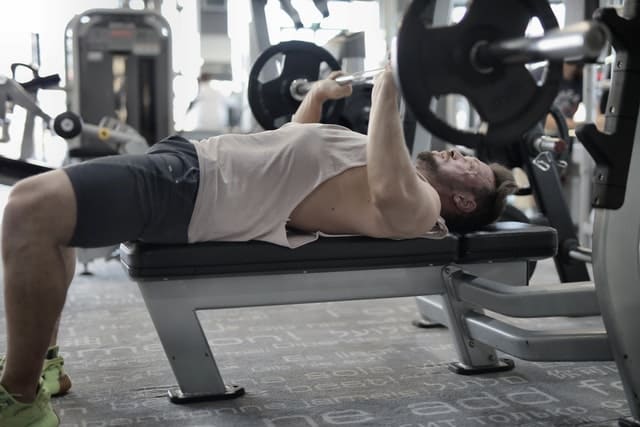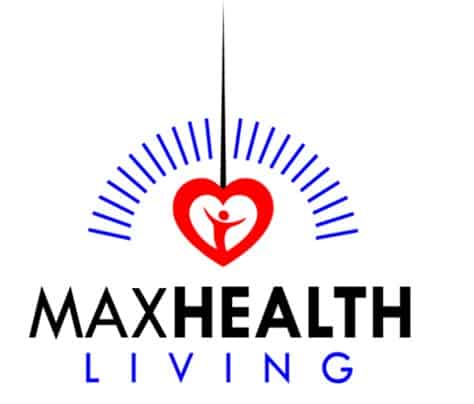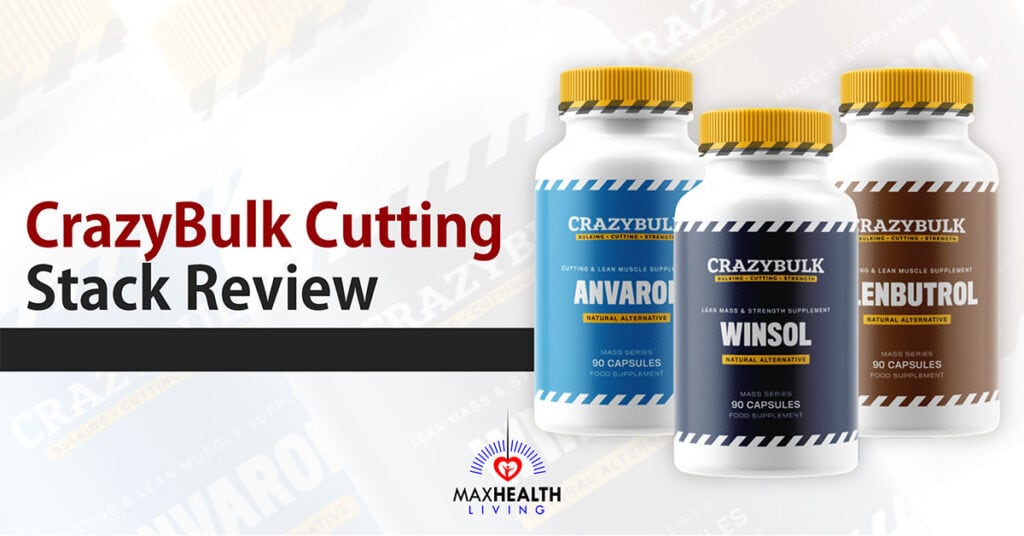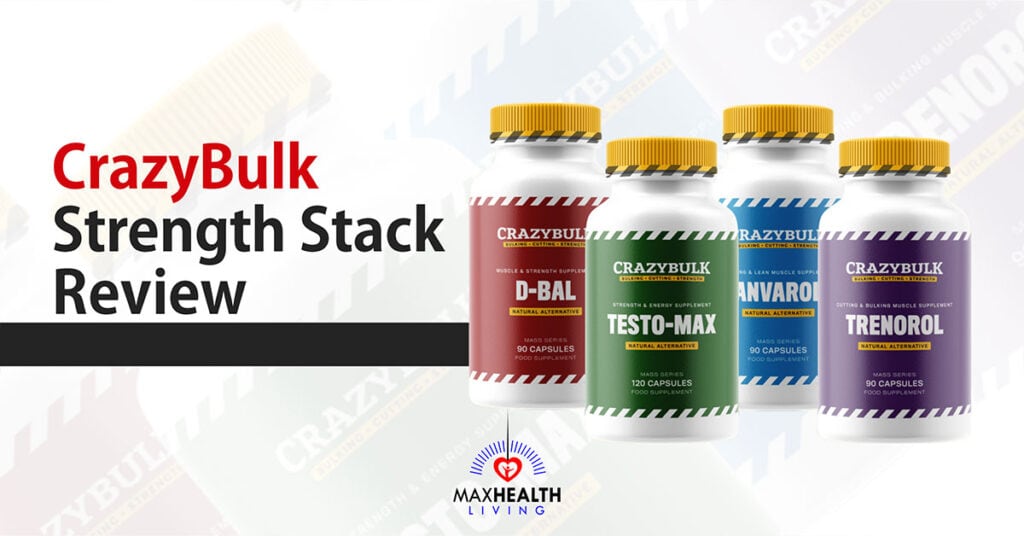Bodybuilding vs Strength Training: What’s better? (reps, physique, fat loss)
Max Health Living is a reader-supported site. Purchases made through links may earn a commission. Learn more.
Do you want to get strong and muscular? If so, you might be wondering whether bodybuilding or strength training is the best way to achieve your goals. Both of these types of training can help you get strong and muscular, but they have different benefits and drawbacks.
Today’s article is a clash of the titans: bodybuilding vs. strength training.
Bodybuilding and strength training are two sides of the same coin, but the difference is important. We’re looking at the competition between the two, their overlap, and what each can offer to the other.
We will find the sweet spot between bodybuilding and strength training and what this might do for you and your body.
Strength vs. Size: Do You Get Bigger and Stronger Together?
The first thing you need to know is that strength and size do not increase linearly.
You can get bigger without getting stronger and, on the other hand, get stronger without getting bigger. Muscles and strength are related, but you get better at what you train for.
Strength is a result of two major factors:
- The cross-section of a muscle
- The number of muscle fibers within that cross-section you can recruit
It’s also a matter of how fast and efficiently you can recruit those fibers. This means that strength and size overlap, but training for each is its own game with its own rules and different quirks. These are the focus for today.
Training For Muscle Mass Or Strength?
There’s a practical overlap between bodybuilding training – for size and definition – with strength training.
The training methods are similar for a long time as you get bigger and stronger! This is especially obvious in beginners: for the first year or two, the development of strength and size are very closely related. You’ll get bigger and stronger doing just about anything.
However, specificity becomes more important as you get better and your body is less willing to change. This makes the opportunity cost sharper.
If you want to be the best possible bodybuilder you can be, you’ll need to focus on muscle mass. If you want to be as strong as possible – or compete in powerlifting – you need to focus on strength.
Remember that you’re moving a slider on a scale between maximizing muscle and strength.
You can always do both simultaneously, but it’s going to come down to picking a priority as you gain experience and results.
Bodybuilding vs. Strength Training For Beginners
Bodybuilding and strength training have opposite approaches to training if they’re being done properly. They both use progressive overload – doing more over time – but the actual details couldn’t be different.
How Does Strength Training Work?
Strength training starts with a higher-volume approach where the focus is on lots of smaller weights for reps. This builds a basis of muscle and work capacity, which also supports the health of joints and tendons and potentiates more muscle and strength growth later.
After building this foundation, the idea is to slowly trade off the number of reps you’re doing for more weight.
A good strength training program looks like a slide from high-rep, moderate-weight towards low-rep, higher-weight – culminates in a strength test with heavy singles or rep-maxes.
How Does Bodybuilding Training Work?
Bodybuilding training is more about overloading volume. It’s about adding extra work layer after layer, keeping the intensity high but focusing on doing more work.

This puts the focus on strength-endurance and muscular endurance.
While a powerlifter focuses on increasing their 1-rep max in big exercises, a bodybuilder might progress by adding more exercises, adding more weight to a high-rep set, or adding more reps to their existing rep-max.
Instead of moving from volume to intensity, they move from volume to more volume and never really taper down.
Deload periods and test days still happen, but they’re all in service of putting more work through the muscles over time without worrying about strength.
Building Strength and Muscle at the Same Time
There’s a huge overlap in how this works practically – both the bodybuilder and the strength training enthusiast will be doing similar exercises and rep schemes sometimes. There is also likely to be more variety and less movement-focus in bodybuilding.
Bodybuilding is about muscles – not specific movements – so there’s more freedom to use different options. Building muscle can happen from a bicep curl, a row, a pull-up, or using a cable machine.
Bodybuilding doesn’t value exercise-specificity because there’s less focus on testing a single exercise.
In simple terms, bodybuilding uses more variety because there’s no one exercise to compete in or focus on as a testing choice.
How Training for Bodybuilding Works
Bodybuilding training is about hypertrophy – increasing the size of muscles. Then, when cutting, it’s about reducing fat mass and preserving or building muscle (yes – you can do both simultaneously).
This means that bodybuilding training resembles many of the “early-program” workouts that you will find in strength training. It focuses on building bigger muscles and increasing volume, while strength training will typically only use briefly.
This makes bodybuilding training very predictable and a constant for athletes and strength enthusiasts alike.
Muscle mass and tendon health respond well to the proper use of bodybuilding training methods and high-rep strength training.
How Bodybuilding Training Improves Strength Training
Work capacity and higher-rep strength training are preparatory. They’re useful for building strength and power and building tendon strength and resilience. When properly balanced against your recovery needs, they make for a much stronger and healthier body – a foundation for other goals.
Boosting Long-Term Strength Gains
By increasing the size of your muscles, you can improve your later strength development.
Larger muscle cross-sections are stronger in general and – on the same person – can be a great way to potentiate huge strength gains. This often balances up to make bodybuilding training an important step in developing maximum strength over time.
Supporting Better Metabolism in Muscles
Bodybuilding training has excellent metabolic benefits in the muscle, where it can improve energetics. This is another way to potentiate long-term strength gains, making it a key step in building strength.
Metabolic benefits in the muscle are also useful for endurance, sports performance, better joint health, and improved resilience to injury.
Preventing Joint Injury and Strengthening Tendons
High rep work – the hallmark of bodybuilding – is also essential to preparing non-muscular tissue. It’s not as sexy as massive muscle gains, but the development of tendon strength and stiffness makes movement possible.
It’s also the foundation for power and other forms of repeated movement proficiency.
Bodybuilding-style training is a great part of the General Physical Preparation (GPP) used in strength training and sports conditioning. It helps keep tendons and ligaments safe, protecting you from a short gap in training and the long-term missed training that comes with injury.
Bodybuilding is also useful on the other side – when rehabilitating an injury.
Building strength and using higher reps is a great way to support the recovery of injured tissues – as long as the load and rest/sleep are appropriate!
How Strength Training Works
Strength training is a fun and engaging part of the bodybuilding experience. It’s a way of testing yourself and overlaps with the constant progressive overload you’re using to build muscle mass.
There’s no way to ignore the fact that getting bigger and stronger often happens together – and they’re both very rewarding. When you’re practicing strength exercises regularly, you’ll inevitably get stronger – and some people enjoy combining the two.

Supporting Long-Term Muscle Gains
Stronger people have a chance to lift more weight, and their total volume – the main factor for bodybuilding progress – will often be higher.
There’s more effect to performing a set of 10 squats with 200kg than 140kg. The difference here is enormous and stronger people will be able to unlock more effective muscle-building workouts simply because they’re stronger!
Building a ‘foundation of strength’ is a common approach – especially during the early days.
Programs that combine strength and size training are popular because beginners can make significant gains on both simultaneously. For the first 1-2 years of training, it can be beneficial to focus on strength – when you know you’re going to make muscular gains regardless.
Programs like MadCow, incorporating lower-rep and max-rep sets, are a good example of how beginners can improve easily in both fields.
Building Control and Neuromuscular Health
Strength is also an important part of the control of the body and the muscles that develop over time. Better strength in the whole body will provide a better opportunity to control, mobilize, and use muscles for bodybuilding.
Bodybuilders who are stronger and more in tune with their movement can benefit from the muscles they’re trying to develop. This comes from the quality of movement found in strength training, too.
Combining better strength, control, and movement-focus from strength training allows you to recruit muscles more effectively in the long term. This strength-mobility-control overlap is also key to preventing injury – where active control at higher speeds or higher force is essential to strength, muscle-building, and injury prevention.
What’s More Useful – Bodybuilding or Strength Training?
Bodybuilding doesn’t rely on strength training as much as the other way around.
However, strength is an important part of becoming a better bodybuilder, and working at higher intensities with more weight will transform the positive muscle-building effects of workouts.
It’s also a great way to capitalize on your work, while periods of strength training will help keep your body safe, healthy, strong, and ready to pick up more muscle-building volume.
This is most important early on in your training experience, where you can rapidly improve both your strength and size together.
During the first 1-2 years of training, there’s not that much difference in the way your body responds to the focus on strength or size – and doing both at once is far easier.
Comparison |
Purpose |
Outcome |
Exercises |
| Bodybuilding: | For increasing the size of the muscles | Bodybuilding is about appearance |
|
| Strength Training: | For improving overall strength | Strength training is about performance |
|
Bodybuilding vs. Strength Training for Fat Loss
Bodybuilding and strength training are equally viable for fat loss.
Bodybuilding focuses on the cardio side of fat loss but usually requires a cycle of bulking and cutting, which may mean committing to weight loss (limiting muscle growth) at the start of your bodybuilding journey if you want to burn fat.
Strength training and bodybuilding have similar approaches to fat loss of simply changing diet.
Eating less while practicing either bodybuilding or strength training allows you to burn the same amount of fat in both cases. Neither bodybuilding nor strength training offers a distinct edge over the other.
Powerbuilding: Building Strength and Muscle Together
Powerbuilding is a strength-focused approach to bodybuilding. It’s a way of building strength and size together, combining the best benefits of both.
This is an old philosophy, though – it’s how bodybuilders trained during the silver and golden eras.
Bodybuilders like Arnold Schwarzenegger, Franco Columbu, and Ronnie Coleman had histories of competing in powerlifting alongside their hypertrophy training. Many bodybuilders with this approach attribute the fullness and appearance of their muscles to high-strength training phases.
There’s no major downside to this kind of training, as it’s possible to do both at once, and it makes even more sense when you find that your bodybuilding or strength training has fallen off or “plateaued.”
Workout programs like Greyskull LP, Sheiko Novice Program, and Jacked and Tan fall into this category. They combine higher-intensity and higher-rep work in the same workouts to promote growth and strength.
Muscles are not responsive to just one type of training, and power building or strength-focused bodybuilding training is both fun and effective. It has a variety of focus to help prevent plateaus (and keep things interesting) while you’re on your muscle-building journey.
This is even easier during bulking phases. Your ability to recover is significantly better, and you’re not as limited in your practice of one type of exercise or training style.
Old Wisdom for Bodybuilding vs Strength Training
Bodybuilding and strength training complement each other far more than they compete. The goal is to get bigger and stronger – and strength training helps bodybuilding, just like the opposite.
Bodybuilding style training is arguably more useful for strength training than vice versa. It is the foundation for better strength, health, and long-term development.
Every training program should involve some bodybuilding-style workouts, whereas bodybuilding doesn’t require strength training.
However, it’s always good to be well-rounded, especially with the overlap. Strength training’s high-force, high-control, movement-focused training is a great place to put your energy to build sustainable development and high-quality bodybuilding for years to come.
Important Disclaimer: The information contained on MAX HEALTH LIVING is intended for informational and educational purposes only. Any statements made on this website have not been evaluated by the FDA and any information or products discussed are not intended to diagnose, cure, treat, or prevent any disease or illness. Please consult a healthcare practitioner before making changes to your diet or taking supplements that may interfere with medications.
Who We Are

We are a team of fitness, health, and supplement experts, and content creators. Over the past 4 years, we have spent over 123,000 hours researching food supplements, meal shakes, weight loss, and healthy living. Our aim is to educate people about their effects, benefits, and how to achieve a maximum healthy lifestyle. Read more.



